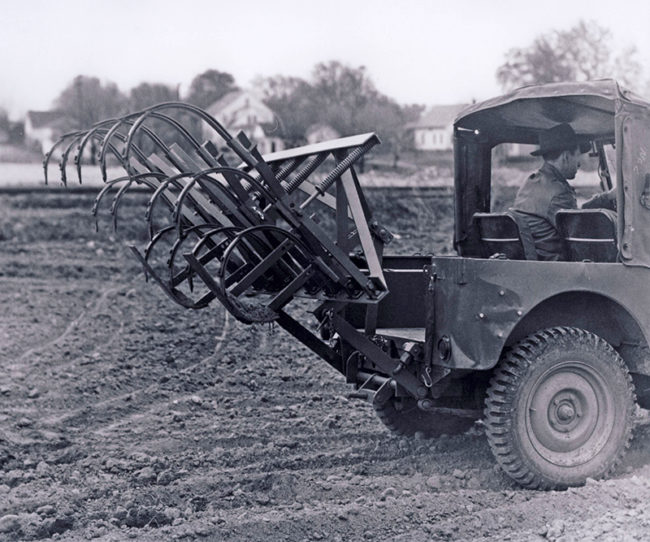UPDATE: **SOLD** Was $400.
Dave shared this PTO powered saw mill. It even includes a guard … almost looks safe!
“Older yankee pro portable sawmill”
UPDATE: **SOLD** Was $400.
Dave shared this PTO powered saw mill. It even includes a guard … almost looks safe!
“Older yankee pro portable sawmill”
As often is the case with these company bios, I rarely know the full story, so this is a working draft. (note, I have seen Bestop as BesTop and BESTOP, but I feel Bestop is easier to read for our purposes). If you have other interpretations, thoughts, or corrections, don’t hesitate to comment below.
Bestop Launches:
In the early 1950s, Tom Bradley ran an auto upholstery shop in Boulder, Colorado. After some customers came to him wanting repairs to their soft jeep tops, Tom decided he could build a better top, so he launched Bestop on a part-time basis in 1954. According to the Bestop website, “Working out of an old brick schoolhouse with seven employees, Bestop quickly developed a reputation for quality and the word spread.” And, from 4wd.com, “To [Tom’s] surprise, the Jeep replacement tops began making more profit than the upholstery projects. It wasn’t long before Bradley decided to sell his upholstery business and focus on designing and manufacturing tops.”
Here’s a look at some early brochures. Note the “Vinalette” top, an attempt at branding that didn’t last very long. These brochures are likely mid to late 1950s (these pics came from this eBay auction):
The Bestop site notes that the business continued to grow for ten years under Tom. At that point, the story on the company’s website advances to the mid-eighties, but skips additional history in the process.
Bestop Expands Product Line:
The only evidence I could find that Bestop expanded it’s produced line under Tom was this 1961 brochure introducing rear seats. The seats have a flat, simple design.
The Stengel’s Obtain Control:
In September of 1966, forty-year-old James (Jim) Joseph Stengel filed a patent for a plastic tab that, when placed on the front edge of a soft top, allowed it to hook into the down-facing channel that is attached to most vintage 1/4 ton jeep windshields. This improved the speed at which a top could be mounted to a jeep. What Jim’s relationship to Bestop was at that point isn’t clear to me yet.
As of the 1966 patent filing, there was no assignment to any company, just to Jim himself. In the meantime, at some point between 1964 and 1968, Jim and his wife Marj acquired Bestop (from Tom?) and began operating it, as her obituary notes “Marj and Jim ran their business, Bestop Mfg., which grew to be a leading manufacturer of cloth “tops” for Jeeps and other recreational vehicles”.
One bit of evidence that the Stengels were connected to Bestop by 1966 was that Jim filed the above 1966 patent under the address “P.O. Box 318, Boulder, Colorado”, the same address that appears in this May 1968 brochure published by Bestop.
Two years later, in 1968, Bestop Manufacturing filed for a Trademark on the name Bestop, again under the same PO Box 318 address :
Now, this is where it becomes a little confusing. At some point in 1968, Bestop acquired or expanded into several lines of additional products and, around the same time period, Husky Products appears to have dropped a similar type of products.
Below is a visual comparison of a 1966 Husky brochure and the 1968 Bestop brochure. The first three pages of the Bestop brochure kind of look like reworked versions of the 1966 Husky brochure (it’s this comparison that started my dive into this topic). And, yes, I realize the tops are somewhat different, especially at the back (Husky continued to advertise the full top into the 1970s, but dropped advertising for the half tops, the multiple doors, and other items).
Not many photos (that I have seen) of M-38A1s coming off of a transport ship.
View all the information on eBay
“1960 Press Photo United States Army Transportation Corps Jeep and Carrier. This is an original press photo. United States Army Transportation Corps Jeep and Carrier. Photo measures 10 x 8.25 inches. Photo is dated 08-25-1960.”
Maury shared this unusual can featured the rear of a jeep. I’m guessing the beer has been consumed?
View all the information on eBay
“HERE ARE 2 BRAND NEW, CRAFT BREWERY BEER CANS FROM THE CRAFT BREWERY IN NANTUCKET MASSACHUSETTS. GETAWAY IPA WITH A COOL JEEP CJ-5 ON THE BEACH LOGO AND CRAN-TUCKET WITH A CRANBERRY FARMER. COOL PAINTED LABEL CANS. BOTH IN EXCELLENT CONDITION.”
The Summer 2019 issue of Dispatcher Magazine is out, along with the Holy Toledo 2020 calendar, just in time for Christmas!
I can’t remember how I obtained this photo of a Dutch jeep book cover, but I see no evidence that I ever posted it (found it on my old computer). So, here it is. The publishing date appears to be 1949.

This December 1954 Volume I, Issue I was the first issue of the ‘new’ KW Booster News, a monthly newspaper designed to inform employees. Updates would include the newest announcements, company updates, employee updates (such as the new profit sharing model), and intra-company events (such as intramural bowling teams). This first issue introduces the brand new CJ-5, among other announcements.
I’m not sure how many issues of the KW Booster were published. The only other issue of this newspaper on eWillys is the June 1958, Vol. 2, No. 1.
Roger spotted this sign. I can’t tell how large it is, but it looks like a good price.
https://www.facebook.com/marketplace/item/571612383646378/
“Nice Jeep light up decor”
Just some wagon and truck ads this morning. I’ve got the inaugural December 1954 KW Booster News almost ready for Tuesday morning.
Mario shared this article, published on March 25, 1944, in the Courier-Journal out of Louisville, Kentucky. a while ago on Facebook. It shares the news about a Bantam BRC-60 that was sent to the Smithsonian.
There’s a newsreel about the capture of Goch, which credits the Canadian fighters. The photo seen at the bottom includes a medic and jeep ferrying wounded surrounded by destruction.
Chris has these extra items for auction on eBay.
View all the information on ebay
“Vintage Jeep Willys matchbook lot & lighter dealerships and service station set. Matchbooks are in good condition. Lighter does not work.”
Don’t forget about the Mason-Dixon Jeep Gathering this Sunday, October 20th, in Union Mills, Maryland.
https://www.facebook.com/events/union-mills-homestead/mason-dixon-jeep-gathering/209218449654048/
Here’s a pic from the 2014 event posted a few years ago as part of a Baltimore Sun article:
I found this Roamin’ Chariots jacket club patch on eBay (purchased out of Kansas). The Roamin’ Charios Jeep Club appears to have been originally based in the Tri-Cities area of Washington (hence the design includes Mt. Rainier in the background and the desert-scrub-looking plants in the foreground). Now, the club’s contact is in Spanaway (near Tacoma) on the west side of the state. So, I’m not sure how active or how many folks are involved in the club at this point.
The patch is 9″ wide and 10″ tall. I’ve included a roll of electrical tape to better appreciate the size.
I figured at the very least that the church still existed. So, I made some guesses and determined where I think the photo at the bottom was taken.
The church is in the town of Gela, Italy. The church still looks about the same, but the building to the left has seen some changes.
View all the information on eBay
“1943 Press Photo Soldiers in jeeps park outside of building & old church, Sicily. This is an original press photo. World War II – Sicily. … glory flies from a building in Gela in southern Sicily after the city fell … invading Americans. A column of jeeps pauses near an ornate old church which looks out of place beside modern military machines. Photo measures 7.5 x 7 inches. Photo is dated 7-24-1943.”
in 1961, President Kennedy signed the Peace Corps Executive Order. Since then, over 1/4 million volunteers have served around the world. Given the rough conditions, especially in the early days, jeeps were a natural fit for the volunteers heading to remote areas. Folks were even trained on how to used jeeps as a part of their introduction to the Peace Corps.
There seems to have been a wide variety of jeeps used by the Peace Corps. How the jeeps were obtained isn’t clear, but at least some in 1965 were donated by Oakland Motor Sales. I imagine the military versions, like the M-170 seen below, could have been transferred to the Corps. After a few years of service, some areas of the world abandoned jeeps. For example, a deteriorating jeep fleet in Sierra Leone led to the abandonment of jeeps, at least according to this article. In another example, according to Ron Horton, who wrote a somewhat risqué look at his time in the Peace Corps, jeeps were quickly phased out in favor of bicycles, because the bikes were considered more friendly by the person who oversaw the Brazilian Peace Corps units.
Here are a few photos related to the Peace Corps and Jeeps:
PEACE CORPS TRAINING:
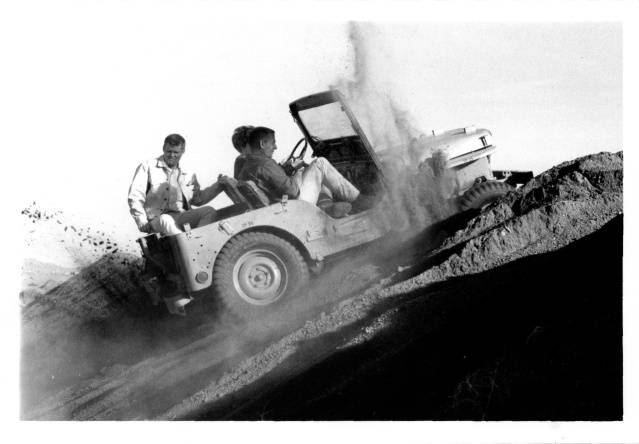
1964, NATIONAL ARCHIVES, CAPTION: Peace Corps trainees on the D.H. Lawrence Ranch near Taos, New Mexico. Three men in jeep on sandy hill, sand flying through air.

1964, NATIONAL ARCHIVES, CAPTION: Peace Corps trainees on the D.H. Lawrence Ranch near Taos, New Mexico. Six women driving in snow-covered dirt road, juniper bushes in background.
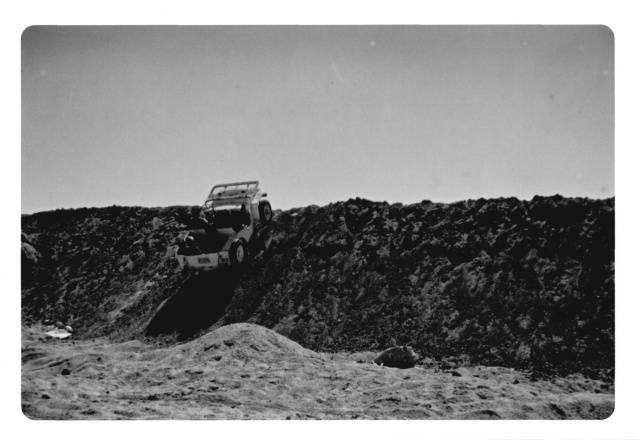
1964, NATIONAL ARCHIVES, CAPTION: Peace Corps trainees on the D.H. Lawrence Ranch near Taos, New Mexico. Jeep ascending steep dirt hill. [THIS MIGHT BE A CJ-3A GIVEN THE SIDE MOUNTED TIRE]
Here’s a wonderful photo of Perdita Huston, former Peace Corp Director of Mail and Bulgaria, in a WWII jeep:
This photo of a CJ-3B with a Koenig hardtop in Chile was taken around 1965:
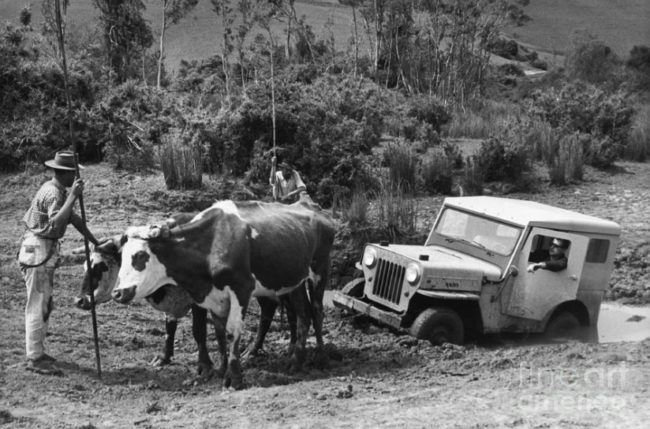
CAPTION: Peace Corps volunteer Emory Tomor waiting for a farmer and his oxen to pull his Jeep out of the mud. Photograph, c1965. View the photo at fireartamerica.com.
Finally, there’s no caption with this image of the back of a jeep, possibly a 1948 CJ-2A given the spare tire location:
These appear in good shape. You can learn more about the Selectro history here.
View all the information on ebay
“I don’t know if Selectro made these for Sears? But the Selectro ones look like these. You don’t see many with the Sears name, I believe they are 19 spline. 3″ across bottom gear. Need cleaned up and greased.”
Chris is selling this huge book of Willys/AMC information. He also has some other jeep-related items on eBay.
View all the information on ebay
“Vintage Willys Jeep Parts and Accessories catalog early Willys w/AMC pages. Older casing with AMC parts pages. Please look at photos carefully. Good condition.”
Longtime public servant and former WWII veteran Ken Hechler served President Harry S. Truman, held the position as West Virginia’s Secretary of State, and represented West Virginia in Congress for several terms. Early in his Secretary of State run he began using a red CJ-5 as his office. Over the years he went through 6 jeeps.
Over the years Ken wrote multiple books. His earliest was Bridge at Remagen: A Story of World War II. He went on to write additional books, articles and other works. Eventually, Carter Taylor Seaton wrote a book about him called The Rebel in the Red Jeep: Ken Hechler’s Life in West Virginia Politics. Here are a few pics:
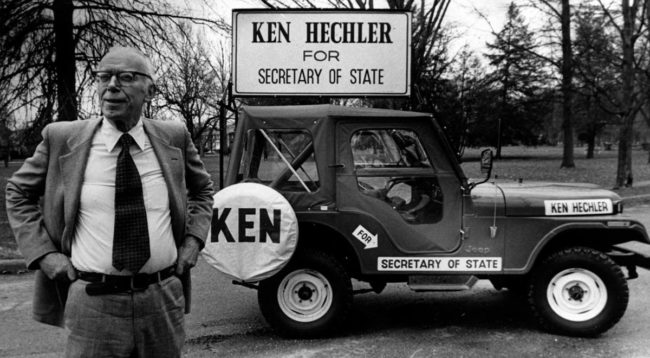
This event was captured in a series of 10 photos. Some others from his visit March 1944 visit to Camp LeJeune can be found here.
View all the information on eBay
“1944 Press Photo Henry L Larsen talks to Alexander A Vandegrift in jeep, NC. This is an original press photo. Vandegrift, Alexander A. (Lieutenant General). Lieutenant General Alexander A. Vandegrift, Commandant of the United States Marine Corps, recently made a four-day inspection tour of the Marine Corps training base at Camp Lejeune, New River, North Carolina.
It was his first visit since he became commandant and the first trip back there since he left it in the Spring of 1942 to lead the Marine assault forces that drove the Japanese out of the Solomon Islands.
Lieutenant General Alexander A. Vandegrift (front seat of Jeep), listens to Major General Henry L. Larsen (right), describe a re-enforced rifle company’s field problem on a musketry range Camp Lejeune, New River, North Carolina, during his inspection tour. General Larsen, Commanding General of Camp Lejeune, and Colonel William N. McKelvy (rear seat), of Washington, District of Columbia, Commanding Officer of the Instructors’ Group, Replacement Battalions, accompanied General Vandegrift during the field problem. Photo measures 10 x 8.25 inches. Photo is dated 3-2-1944.”
This handmade jeep was made by Chinese Prisoners and presented to an American Gynecologist during the Korean War. It’s not completely clear, but I believe this was part of the Korean War Veterans National Museum & Library, which closed recently. Some (all?) of the collection was moved to the Truman Library. The photo and caption below was published as part of a January 2019 magazine article published by the Tru Magazine (a donor magazine published by the Truman Library Institute).
This love company brochure highlights its Spike Tooth Harrows equipment. Based on the first set of pics here, this equipment have have been used with the Disc frame work as well.
UPDATE: **SOLD** Was $4000.
Here’s a pretty rare one!
“1957 Willys 1/2 ton troop carrier. 1of 103 built”
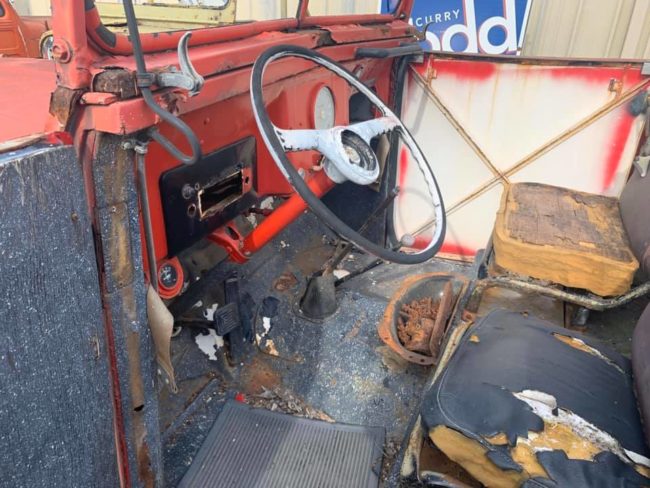
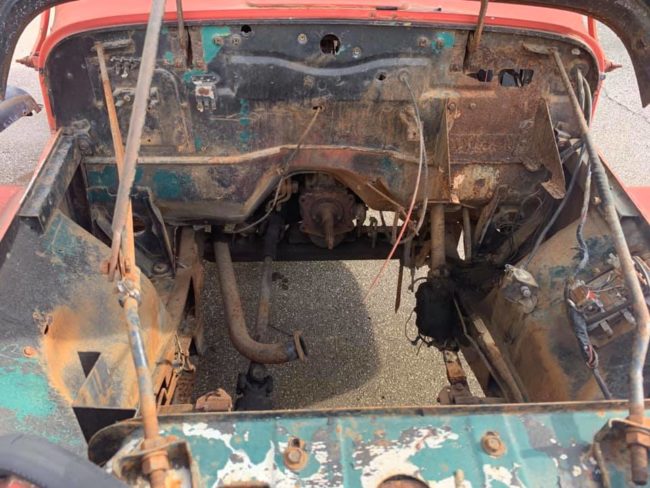
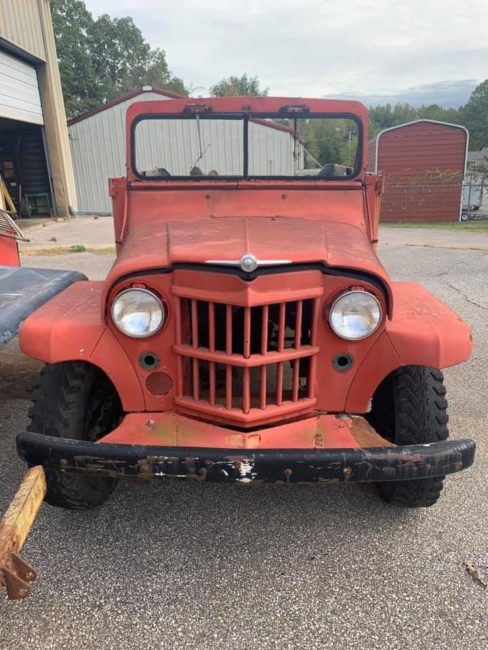
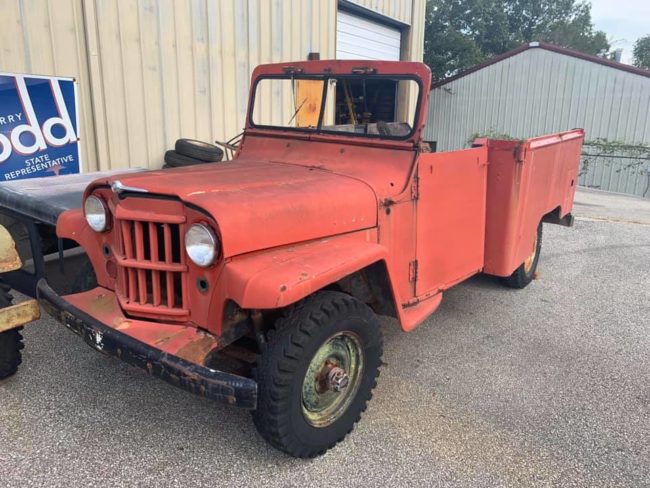
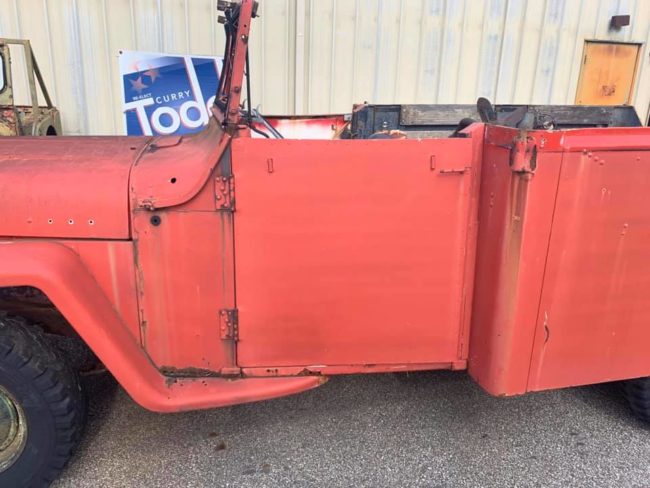
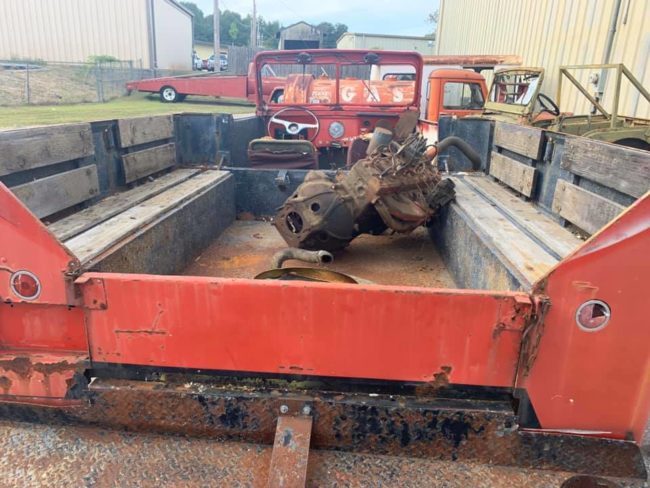
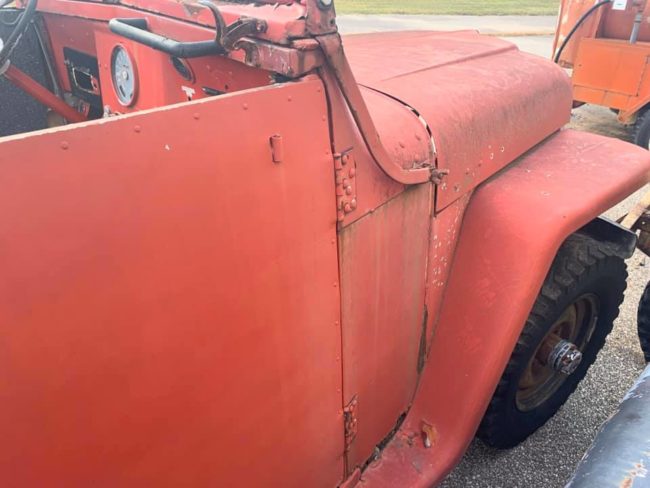
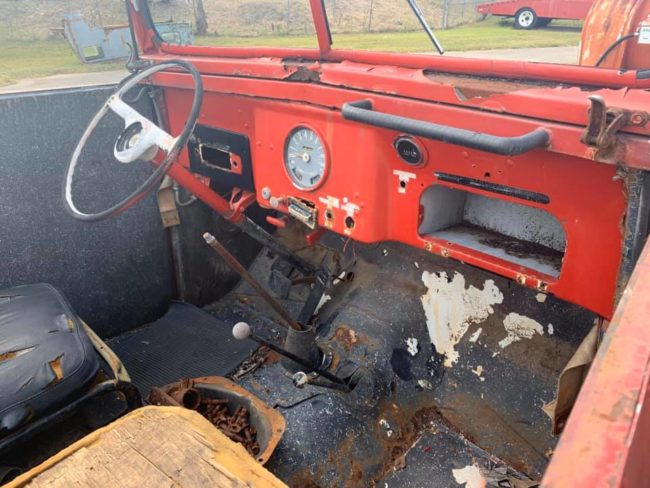
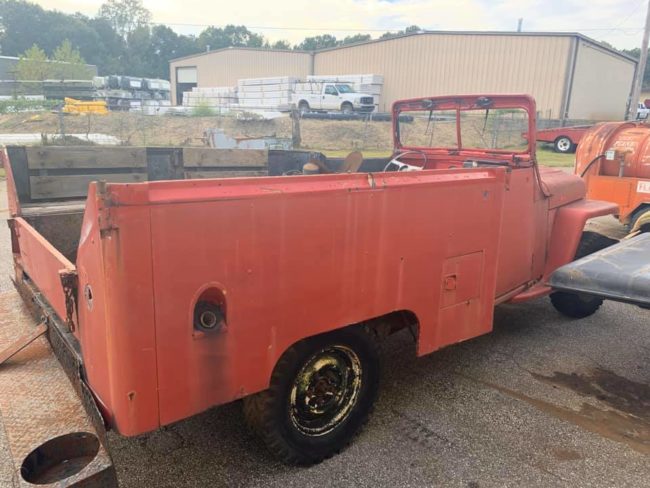
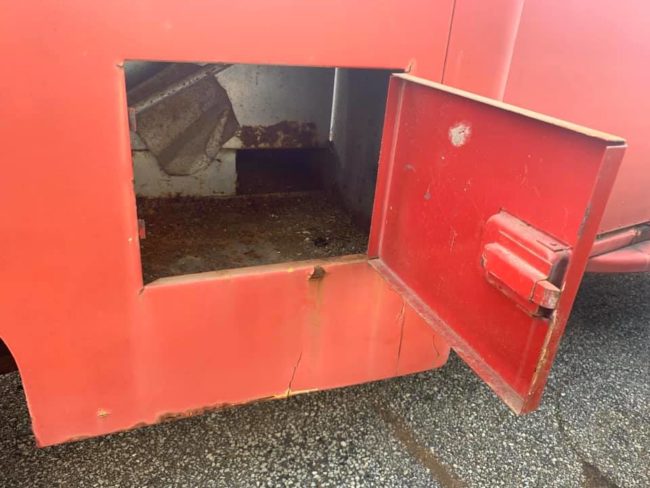
These photos shows a VEC CJ-2A with different implements. Note the passenger rear quarter panel damage. Perhaps that should have been a sign that perhaps the jeep wasn’t cut out for farming? (though I’m assuming the damage happened while farming).
Can anybody provided more info on the implements below? I couldn’t identify them.
1. This has a dual setup similar to the Love Tandem Disc Harrow, but with the spike tooth harrows rather than discs.
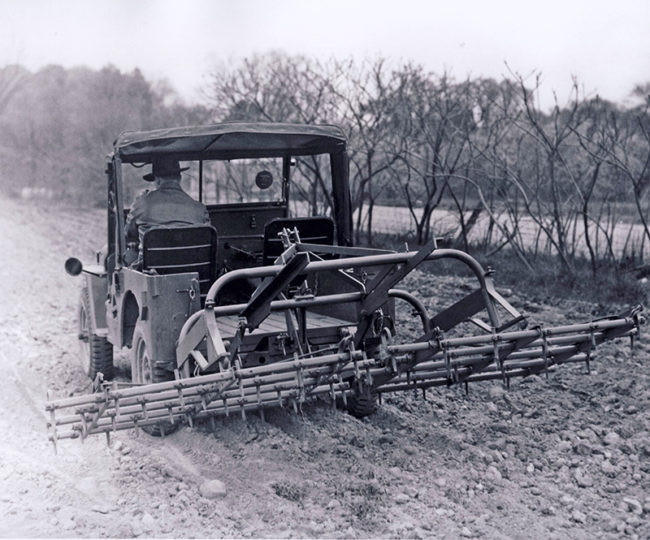
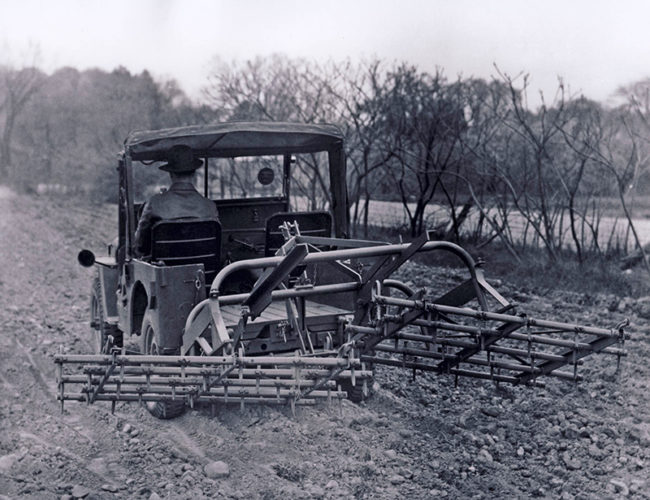
2. This appears to be a Newgren Company Field and Pasture Cultivator:
